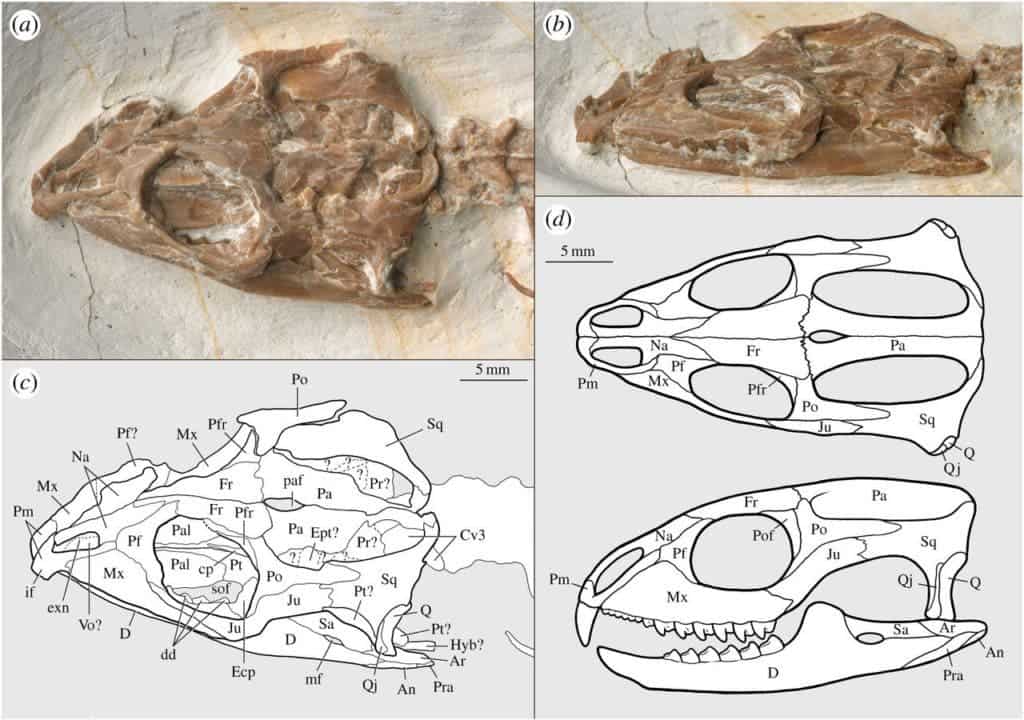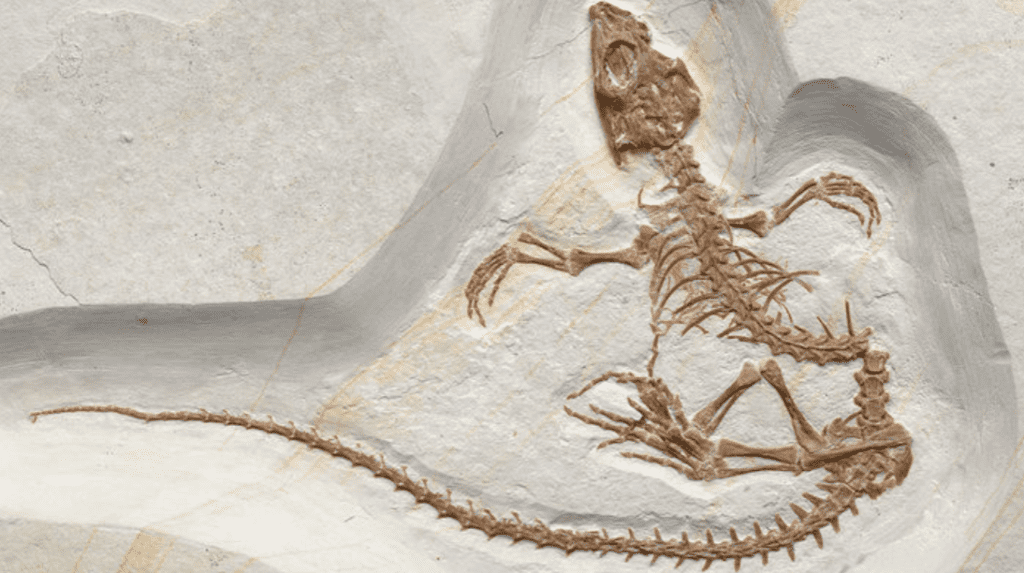Scientists have discovered a beautifully preserved, almost complete fossil of a new reptile species. Dubbed Vadasaurus herzogi, the discovery offers a snapshot of evolution at work bridging life on land and in the water.
The fossil was recovered from Kimmeridgian-aged (a subdivision of the Late Jurrasic) marine limestones in the Solnhofen municipality of Bavaria, Germany. They belong to an up until now unknown species dubbed Vadasaurus herzogi, and belongs to the Rhynchocephalia lizard order, a close relative of a small group of ancient reptiles called pleourosaurs (genus Pleurosaurus).
Long family history
Calling Rhynchocephalia a modern success story… would be a bit of a stretch. It’s currently represented by a single species, the Tuatara (Sphenodon punctatus,) whose range encompasses 32 islands off the coast of New Zealand. But from an evolutionary point of view, the order has a deep and rich history, spanning over 240 million years and more than 40 known fossil taxa. An evolutionary history that only grows richer with the discovery of this species.
What’s striking about Vadasaurus (latin for “wading lizard”) is that its fossilization captured an ongoing transition from one habitat to another. Its anatomical features aren’t fully tailored to life in the water but were adapted enough to enable an aquatic lifestyle and suggest ongoing adaptation away from life on dry land.
“The early steps in this transition are distributed throughout the skeleton and appear to increase hydrodynamic efficiency for both swimming and aquatic feeding,” the authors note.
For example, the authors report that this 155 million-years-old animal didn’t have the long trunk and short (relative to body size) limbs of later aquatic pleurosaurs. This less-streamlined frame would make it a poorer swimmer compared to latter pleurosaurs, but would give Vadasaurus the upper claw on dry land — longer limbs make for a faster runner, for example. However, it did have features that point to an ongoing adaptation process for life in the water, such as the shape of its skull and nostril position. Its bones were also found to be less mineralized than other land-locked animals. Lower levels of mineralization translate to less weight, an adaptation that could aid buoyancy and reduce energy expenditure needed to stay afloat and breathing.

Photographs Vadasaurus herzogi’ skull. A) dorsolateral and B) lateral view.
Image credits Gabriel Bever, Mark Norell, 2017, Nature.
All things considered, there are still a lot of things we don’t know about Vadasaurus. However, the species provides a unique opportunity for paleontologists. Comparison of these fossils with earlier (land-dwelling) and later (water-dwelling) pleurosaurs would allow them to trace adaptations to marine life as they were ongoing. It would also provide some insight into how other, separate ancient species (such as ichthyosaurs and mosasaurs) adapted for ocean life.
“The exact degree to which Vadasaurus had adopted an aquatic ecology remains unclear,” the authors add, “but the insight it provides into the origin of the enigmatic pleurosaurs exemplifies the potential of Rhynchocephalia for generating and informing broad-based questions regarding the interplay of development, morphology, ecology and macroevolutionary patterns.”
Ichthyosaurs would conquer the world’s oceans as the dinosaurs trundled around on dry land. Pleurosaurs would join them during the Late Jurassic, and mosasaurs later still, during the Late Cretaceous. Vadasaurus captures the evolutionary processes that led to the pleurosaurs’ relocation to the oceans, slithering snake-like through the waters on long, powerful tails.
The paper “A new rhynchocephalian (Reptilia: Lepidosauria) from the Late Jurassic of Solnhofen (Germany) and the origin of the marine Pleurosauridae” has been published in the journal Nature.










